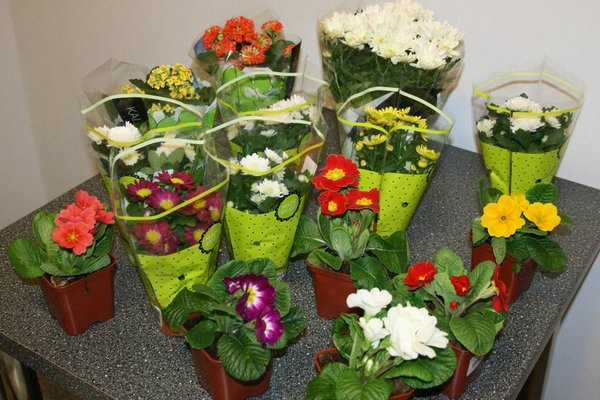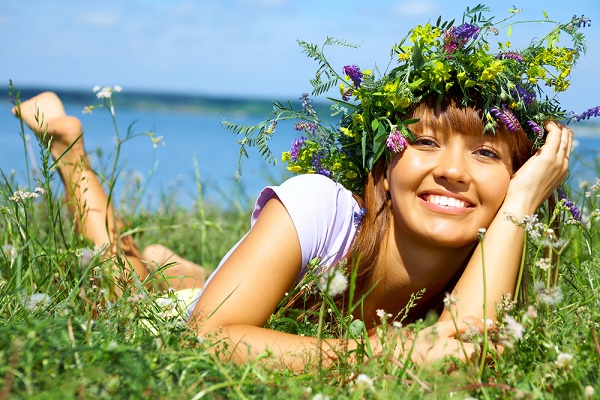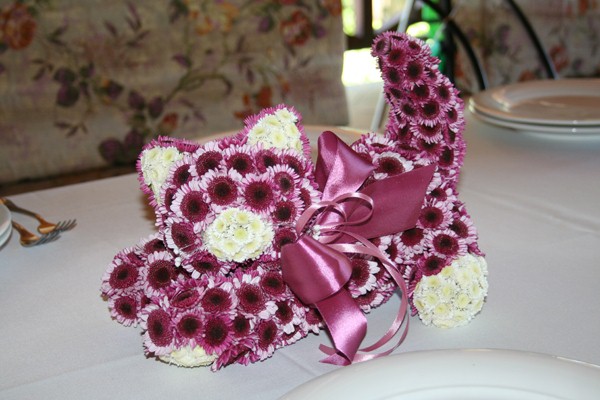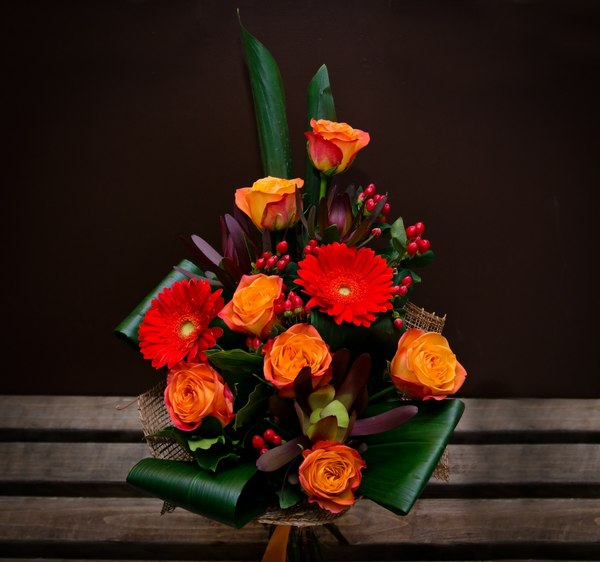HOW TO CORRECTLY COMBINE FLOWERS IN A BOUQUET
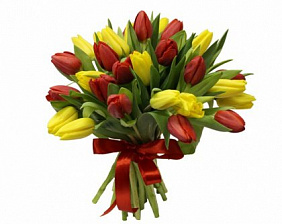 The art of composing floral arrangements has been constantly improved since its appearance many centuries ago. Florists make bouquets, guided by the classical canons of harmony, fashion trends and the rules for combining plants with each other. Given them, you will get an elegant, effective composition that will remain fresh for a long time and will delight you with a beautiful play of colors.
The art of composing floral arrangements has been constantly improved since its appearance many centuries ago. Florists make bouquets, guided by the classical canons of harmony, fashion trends and the rules for combining plants with each other. Given them, you will get an elegant, effective composition that will remain fresh for a long time and will delight you with a beautiful play of colors.
PLANTS WHICH ARE COMBINED AND DO NOT COMBINE ANOTHER WITH ANOTHER
Combinations of flowers When choosing a bouquet or composing it yourself, it is worth remembering – not all flowers can be combined. If we talk exclusively about aesthetics, existing canons, then florists do not recommend combining bulbous plants with woody ones (tulips, for example, will not fit roses) and include different flowers with large, catchy buds in the composition. According to classical rules, the bouquet should have one visual center – several large flowers will shift the emphasis, expressiveness will be lost. In avant-garde compositions, the principle can be violated.
It is necessary to take into account the natural compatibility of colors. Universally combined with other gerbera plants, which almost do not smell, do not drown out the delicate aroma of roses, peonies. Geranium and jasmine secrete a bactericide that purifies water and prolongs the freshness of leaves and buds – they can be combined with any flowers.
Be careful when composing a bouquet you need to be with:
daffodils – they emit thick juice in the water, clogging a slice of other flowers, so it is better to collect mono-bouquets from them;
chrysanthemums, hyacinths – they have a strong smell, they are not suitable for allergy sufferers, people with sensitive smell;
lilies: in addition to the “heavy” armata, they are known for their destructive influence on poppies, cornflowers, and other field plants – but peonies, phloxes, irises tolerate such a neighborhood well;
lilies of the valley are tulip antagonists;
callas – the substances that they secrete have a harmful effect on lilies and roses;
orchids and other exotic flowers that may not coincide with representatives of the regional flora.
RULES FOR COMBINING SHADES OF FLOWERS AND GREEN
Florists have rules for choosing shades and color schemes for bouquets from different plants. Specialists are guided by the classic dial gauge, divided into sectors – such as, for example, interior designers and stylists. All colors are divided into primary and intermediate, warm and cold, which in combination give different effects:
Monochrome color combinations: the composition includes plants with buds of the same color of the same or different saturation – roses (classic, bush, peony), tulips, lilies, peonies, hydrangeas look best in such bouquets;
polychrome – a variegated, bright and cheerful variety of all possible colors is suitable for compositions with field, seasonal (spring-summer) plants, fantasy bouquets;
a similar scheme – in a bouquet there are two or four colors that are adjacent to each other on a color circle, this is a soft, stylish and elegant solution;
contrast: using colors located opposite each other in a circle (blue and yellow, green and scarlet), you can achieve a bright, expressive effect, but the technique requires knowledge of floral principles and experience in making bouquets.
In order for the composition to be aesthetic, to look complete, you need to carefully approach the selection of greenery. Plants of dark, saturated shades — eucalyptus, ruscus, thuja, cypress — go well with bright colors — the last two also extend the life of the bouquet. A universal background is created by fern, tender gypsophila, peony leaves, cochia. The originality of the bouquet will give silver brunia, pale gray cineraria, red berries of hypericum or other interesting greens.
In floristry, as in any other branch of art, there are fashion trends. For example, now professionals prefer not huge solemn bouquets decorated with a crispy film and screaming bows. Now more and more popular are stylish compositions and baskets with wildflowers.
Bouquets using roses, orchids, amaryllises and other noble plants have long been boring to customers. After all, making a gift to a loved one, we want him to be different from others, to associate only with us, to stand out for his personality. To achieve this by buying a bouquet made up of a template is almost impossible.
